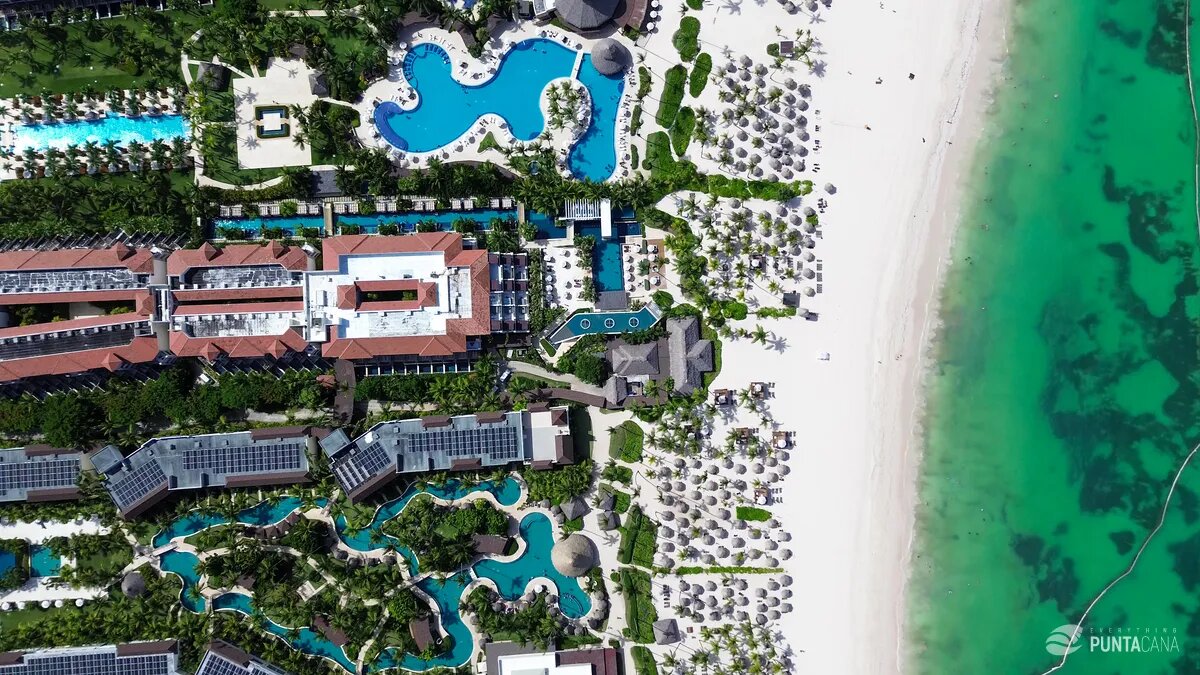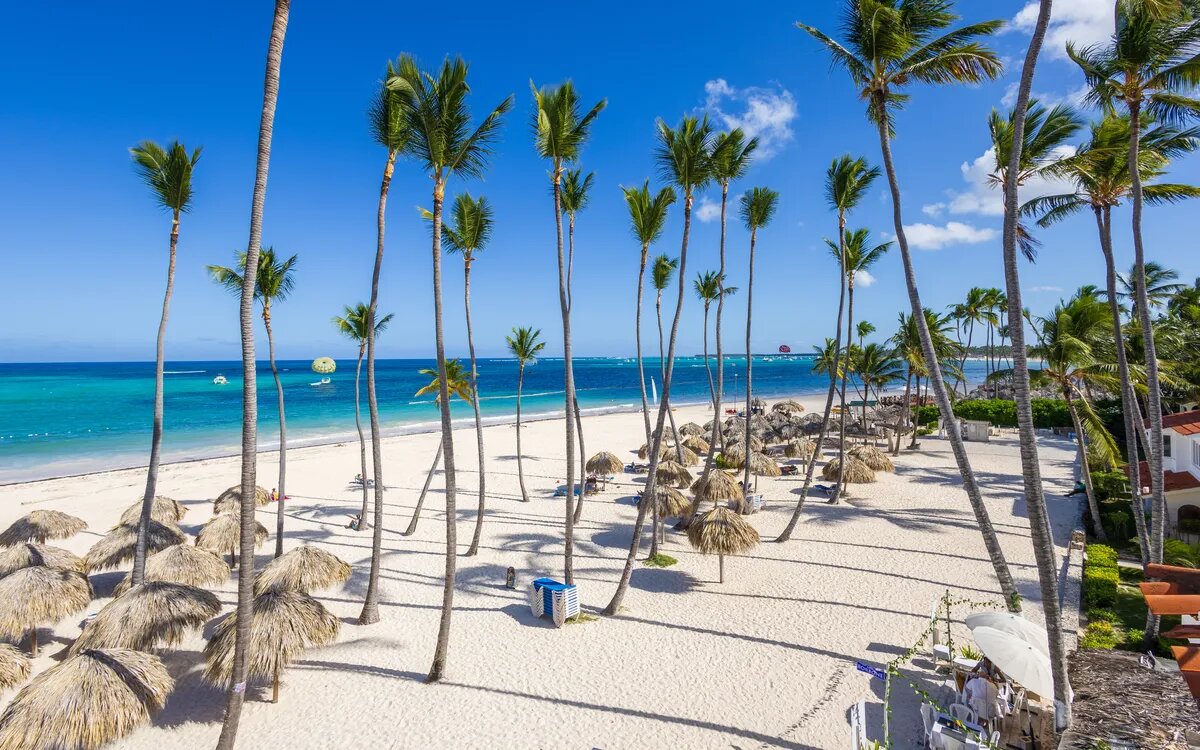Fear of Hurricane Season? What You Need to Know About Year-Round Weather in Cap Cana
Understanding Cap Cana’s Climate

Fear of Hurricane Season? What You Need to Know About Year-Round Weather in Cap Cana
Cap Cana, a picturesque paradise located on the eastern coast of the Dominican Republic, boasts a tropical climate that is both alluring and complex. Understanding its climate is essential for travelers and residents alike, offering insights into what weather conditions to expect throughout the year.
1. Overview of Cap Cana’s Climate
Cap Cana is characterized by a tropical climate, which is defined by consistent warm temperatures and significant humidity. This climate type is marked by minimal temperature variation throughout the year, providing a perennial summer atmosphere that attracts visitors seeking a getaway from colder regions.
The typical day in Cap Cana sees temperatures ranging from the mid-70s to the upper 80s Fahrenheit, creating an inviting environment for sunbathers and beach lovers. The region’s location in the Caribbean also means that it’s influenced by the surrounding warm waters, contributing to its generally mild weather patterns. However, this tropical climate also brings about a pronounced rainy season, which is a common feature in such regions.
2. Seasonal Variations in Temperature
While Cap Cana enjoys relatively consistent temperatures year-round, slight variations do occur between the summer and winter months. The summer season, extending from May to October, is the warmest, with average daily temperatures often reaching the high 80s. This period coincides with the region’s rainy season, where brief yet intense showers provide a refreshing break from the heat.
Conversely, the winter months, from November to April, offer slightly cooler temperatures, typically ranging from the low 70s to mid-80s. This period is often considered the peak tourist season due to its more comfortable climate and reduced precipitation. Visitors during this time can expect more sunny days and less humidity, making it ideal for outdoor activities.
3. Humidity Levels and Their Effects
Humidity is a notable aspect of Cap Cana’s climate, with levels often exceeding 70% throughout the year. This high humidity, while integral to the lush tropical environment, can affect comfort levels, particularly for those unaccustomed to such conditions.
During the rainy season, humidity levels can soar, making the air feel warmer and denser. It’s advisable for visitors to stay hydrated and wear light, breathable clothing to mitigate the effects of the humidity. Additionally, air-conditioned accommodations and establishments provide respite from the muggy conditions, ensuring a pleasant stay.
Understanding Cap Cana’s climate allows for better planning and enjoyment of the region’s stunning natural beauty. Whether indulging in water sports, exploring local attractions, or simply basking in the sun, knowing what to expect weather-wise enhances the overall experience.
Hurricane Season in Cap Cana
Hurricane season can be a daunting time for those unfamiliar with Caribbean weather patterns, but understanding the specifics of Cap Cana’s hurricane season can help alleviate those fears. Whether you’re a resident or a visitor, being informed and prepared is key to enjoying this tropical paradise year-round.

Punta Cana, drone view
1. Timing and Duration of Hurricane Season
The hurricane season in Cap Cana, like much of the Caribbean, officially runs from June 1st to November 30th. This period is characterized by increased tropical activity, though it’s important to note that not every year sees significant hurricane impacts. The peak of the season typically occurs between August and October, when ocean temperatures are at their warmest, providing the necessary energy for storm formation.
During this time, local and international meteorological agencies closely monitor weather patterns to provide timely forecasts and warnings. This vigilance ensures that residents and tourists receive advanced notice of any potential threats, allowing for adequate preparation and safety measures.
Monthly Breakdown of Hurricane Season Activity
| Month | Likelihood of Storms | Average Temperature (°F) | Average Rainfall (inches) |
|---|---|---|---|
| June | Low to Moderate | 82 | 5.4 |
| July | Moderate | 83 | 4.9 |
| August | High | 84 | 5.8 |
| September | Very High | 84 | 6.6 |
| October | High | 83 | 6.1 |
| November | Low to Moderate | 81 | 5.2 |
2. Historical Impact of Hurricanes in the Region
Cap Cana has experienced varying impacts from hurricanes over the years, with some storms causing notable damage while others pass with minimal effect. Historically, the Dominican Republic has faced significant hurricanes such as Hurricane Georges in 1998 and Hurricane Maria in 2017, both of which highlighted the importance of preparedness and strong infrastructure.
Despite these events, advancements in weather forecasting and emergency response have greatly improved the region’s ability to handle such natural phenomena. The local government and businesses are well-equipped to manage and mitigate potential disruptions, ensuring that Cap Cana remains a safe and welcoming destination.
3. Safety Measures and Preparedness
Cap Cana is well-prepared for hurricane season, with comprehensive safety measures in place to protect both residents and visitors. The community has robust infrastructure designed to withstand severe weather, including well-constructed buildings and reliable communication systems.
Before the onset of the season, authorities conduct extensive readiness drills and disseminate emergency plans to ensure everyone is informed. Visitors are encouraged to stay updated through local news channels and weather apps, and to heed any advisories or evacuation orders if issued.
For those traveling to Cap Cana during hurricane season, here are some practical tips:
- Monitor local weather updates regularly.
- Ensure your accommodation has a clear emergency plan.
- Consider travel insurance that covers weather-related disruptions.
- Pack a small emergency kit with essentials.
- Familiarize yourself with the nearest shelter or safe zone.
Our Best Cap Cana Villa Rentals for Hurricane Season
Experience the beauty and tranquility of Cap Cana with our select villa rentals, each designed to offer comfort and safety even during hurricane season. Discover these exclusive properties that ensure a luxurious stay while keeping you well-protected.

Oceanfront Cap Cana (Caleton) villa for rent – Pool, chef, butler, maid, Eden Roc Beach Club
from $4408 / night Read more
Private Cap Cana Caleton Villa with Ocean View, Golf Cart, Large Pool, All Amenities
from $1856 / night Read moreWeather Patterns Beyond Hurricane Season
When planning a trip to Cap Cana, understanding the weather patterns beyond the hurricane season is crucial for making the most out of your visit. While the hurricane season may dominate concerns, the majority of the year offers diverse and inviting weather conditions that cater to various preferences and activities.
1. Dry Season Highlights
Cap Cana’s dry season, typically spanning from December to April, is characterized by its delightful weather that attracts numerous tourists. During this period, the region experiences lower humidity levels and minimal rainfall, making it an ideal time for outdoor exploration and relaxation on the pristine beaches. Average temperatures range from 70°F to 85°F, offering pleasant warmth without the oppressive heat found in many tropical destinations.
The dry season is often referred to as the peak tourist season, and for good reason. The combination of sunny skies and gentle breezes creates perfect conditions for enjoying water sports, golfing, and sightseeing. However, travelers should be prepared for higher accommodation rates and bustling tourist spots during this period. Booking accommodations and activities in advance can help secure the best options and ensure a seamless experience.
2. Rainy Season Expectations

Punta Cana
From May to November, Cap Cana transitions into its rainy season, marked by increased precipitation and humidity. While the term “rainy season” might conjure images of constant downpours, the reality is often more accommodating. Rain showers are generally brief and occur in the late afternoon or evening, leaving plenty of daylight hours for outdoor activities.
Despite the occasional rain, the rainy season presents several unique advantages for visitors. The lush landscape becomes more vibrant, and the reduced number of tourists offers a more intimate experience of Cap Cana’s natural beauty. Additionally, travelers can enjoy lower prices on accommodations and flights, making it an attractive option for budget-conscious tourists seeking a tropical getaway.
3. Best Times for Outdoor Activities
Choosing the best time for outdoor activities in Cap Cana depends largely on personal preferences and the type of activities you plan to engage in. For sun-seekers and beach lovers, the dry season’s predictable sunny weather is perfect for lounging on the beach or participating in water sports like snorkeling and sailing.
Golf enthusiasts will find the dry season’s cooler and less humid climate ideal for a day on the greens. Courses such as Punta Espada Golf Club, with its stunning ocean views, are particularly enjoyable during this time. Conversely, nature lovers and those interested in exploring the region’s rich flora and fauna may appreciate the rainy season’s impact on the landscape, providing a more lush and verdant environment.
In conclusion, whether you prefer the sun-drenched days of the dry season or the quieter, greener ambiance of the rainy season, Cap Cana offers a diverse range of weather patterns to suit every traveler’s desires. Understanding these patterns will help you plan a visit that maximizes enjoyment while minimizing unexpected weather-related hiccups.
Impact of Weather on Local Events and Activities
Cap Cana, with its idyllic landscapes and vibrant culture, hosts a variety of events and activities year-round. However, the weather plays a significant role in shaping these experiences, influencing everything from local festivals to sports. Understanding these impacts can help you make the most of your visit.
1. Weather-Dependent Festivals and Events
Cap Cana’s social calendar is filled with exciting festivals and events that reflect the region’s rich culture and traditions. However, these celebrations are closely tied to the weather. For instance, the Dominican Republic Jazz Festival, typically held in November, aligns with the end of the hurricane season, capitalizing on the milder weather. This timing ensures both safety and comfort for attendees. Similarly, the Carnaval de Punta Cana occurs in March, taking advantage of the dry season’s favorable conditions. These festivals are not only cultural highlights but also significant tourist attractions, drawing visitors from around the world.
Major Festivals in Cap Cana and Their Timing
| Festival/Event | Typical Month | Weather Consideration |
|---|---|---|
| Dominican Republic Jazz Festival | November | End of Hurricane Season |
| Carnaval de Punta Cana | March | Dry Season |
| Cap Cana Music Fest | April | Mild Temperatures |
2. Weather and Water Sports
Water sports are a significant draw for Cap Cana, offering activities such as snorkeling, scuba diving, and windsurfing. However, weather conditions play a crucial role in determining the availability and safety of these activities. During the hurricane season, the ocean can be unpredictable, with rough seas and strong winds. Consequently, many water sports operators may limit activities to ensure safety. Conversely, the dry season provides calm seas and clear skies, creating perfect conditions for enjoying water sports. The warm, sunny days of the dry season make it an ideal time for enthusiasts to explore the stunning marine life Cap Cana has to offer.
3. Golfing and Outdoor Adventures
Cap Cana is renowned for its world-class golf courses, such as the Punta Espada Golf Club, which offers breathtaking ocean views and challenging play. However, weather conditions significantly influence the golfing experience. The dry season, with its clear skies and moderate temperatures, is ideal for golfing, providing comfortable playing conditions. On the other hand, the rainy season can be less predictable, with sudden downpours potentially disrupting play. For outdoor adventurers, activities like hiking and zip-lining are best enjoyed during the cooler months of the dry season when the trails are dry and the air is fresh.
Whether you’re a festival-goer, water sports enthusiast, or golf aficionado, understanding the impact of weather on these activities can help you plan an unforgettable experience in Cap Cana. Embrace the rhythm of the seasons and enjoy all that this vibrant destination has to offer.
Preparing for Your Visit to Cap Cana
Planning a trip to Cap Cana involves more than just booking flights and accommodations. Understanding the intricacies of the area’s weather can significantly enhance your travel experience. A well-prepared visit ensures that you’re ready for any weather-related surprises and can fully enjoy everything Cap Cana has to offer.
1. Packing Tips for Different Seasons
Packing for Cap Cana requires a strategic approach, given its tropical climate and the seasonal variations that come with it. Here are some essential tips:
- Summer (June to August): Lightweight, breathable fabrics are your best friend. Think cotton shirts, shorts, and sundresses. Don’t forget your swimwear and a wide-brimmed hat to protect against the sun.
- Rainy Season (May and October): While it’s still warm, a light rain jacket or poncho can be handy. Waterproof sandals or shoes are advisable for navigating wet grounds.
- Dry Season (November to April): This is the most pleasant time, with less humidity. Comfortable clothing and a light jacket for cooler evenings are ideal.
Adding a few versatile pieces, such as a wrap or scarf, can also help you transition between activities and weather changes smoothly.
2. Staying Informed About Weather Updates
While Cap Cana’s weather is generally predictable, sudden changes can happen, especially during the hurricane season. To stay informed:
- Download Weather Apps: Utilize apps like The Weather Channel or AccuWeather for real-time updates and alerts.
- Local News and Radio: Tuning into local news stations can provide you with immediate weather forecasts and any emergency alerts.
- Hotel Concierge: Leverage the local knowledge of hotel staff or concierges who can provide insight into weather conditions and safety precautions.
Staying connected and aware ensures you can adjust your plans accordingly, keeping safety and enjoyment as priorities.
3. Travel Insurance and Weather-Related Cancellations
Travel insurance might seem like an unnecessary expense, but it can be invaluable, especially if you’re visiting during hurricane season or other unpredictable weather periods.
- Comprehensive Coverage: Ensure your travel insurance includes coverage for weather-related cancellations or interruptions. This can save you from financial loss if flights are delayed or accommodations are affected.
- Policy Details: Check the specific terms and conditions related to weather events. Some policies have exclusions or require specific documentation.
- Flexible Booking Options: Whenever possible, choose accommodations and flights with flexible cancellation policies to allow for last-minute changes without penalties.
Having a robust travel insurance plan provides peace of mind, allowing you to focus on enjoying your vacation without worry.
By preparing thoughtfully, you can ensure that your visit to Cap Cana is as smooth and enjoyable as possible, regardless of what the weather has in store. Embrace the tropical climate with a sense of adventure, and you’ll experience the best of what this beautiful destination has to offer.
Frequently Asked Questions
What is the typical weather like in Cap Cana year-round?
Cap Cana enjoys a tropical climate with warm temperatures throughout the year. The average temperature is around 80°F (27°C). The weather is generally sunny, with more rain expected during the hurricane season from June to November.
When is hurricane season in Cap Cana?
Hurricane season in Cap Cana runs from June through November. The peak months for hurricanes are typically August and September.
How should I prepare for hurricane season if visiting Cap Cana?
If visiting Cap Cana during hurricane season, it’s important to stay informed about weather updates, have a plan for shelter, and keep emergency supplies on hand such as water, food, and medical supplies. Checking with your accommodation about their hurricane preparedness plan is also advisable.
Is it safe to visit Cap Cana during hurricane season?
While it is generally safe to visit Cap Cana during hurricane season, there is a risk of storms. It’s important to stay informed about weather conditions and have travel insurance that covers weather-related disruptions.
What activities are available in Cap Cana during the rainy season?
During the rainy season, you can still enjoy many indoor activities such as visiting local spas, exploring cultural sites, or enjoying the resort amenities. Rain showers are often brief, allowing for outdoor activities once they pass.
How reliable is the weather forecast for Cap Cana?
Weather forecasts for Cap Cana are generally reliable, especially for short-term predictions. It’s a good idea to check the forecast regularly during hurricane season for any updates on tropical storms or hurricanes.
What should I pack for a trip to Cap Cana during hurricane season?
When traveling during hurricane season, pack lightweight, breathable clothing, waterproof gear, and a rain jacket. It’s also wise to bring a flashlight, extra batteries, and a portable phone charger in case of power outages.
Are there any warning systems in place for hurricanes in Cap Cana?
Yes, Cap Cana and the Dominican Republic have hurricane warning systems in place. Authorities provide updates and advisories through local media and weather services. It’s important to follow these updates closely during your stay.
Does Cap Cana have infrastructure to handle hurricanes?
Cap Cana is equipped with modern infrastructure to handle hurricanes, including robust buildings and emergency response plans. However, the severity of a hurricane can impact the region, so travelers should remain vigilant and follow local guidance.
Can travel insurance cover hurricane-related disruptions in Cap Cana?
Many travel insurance policies offer coverage for weather-related disruptions, including hurricanes. It’s important to read the policy details carefully and ensure that hurricane coverage is included.
Always consult with an insurance provider for the most accurate and up-to-date information on coverage options.
Updated on: . Author:
